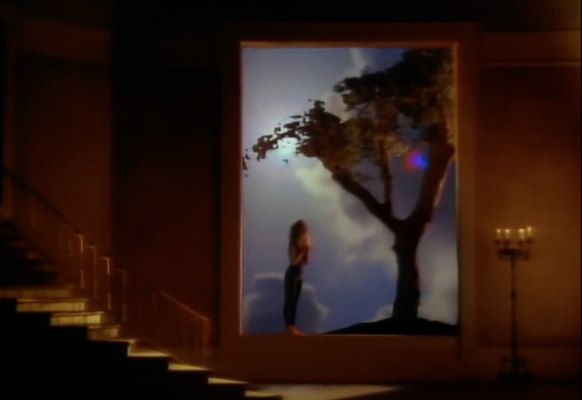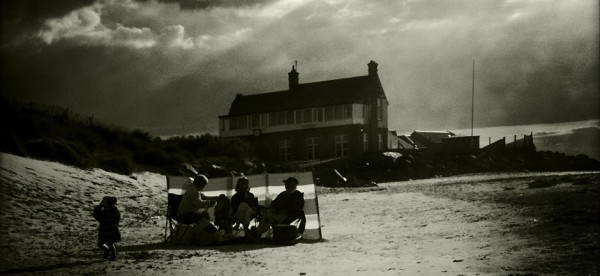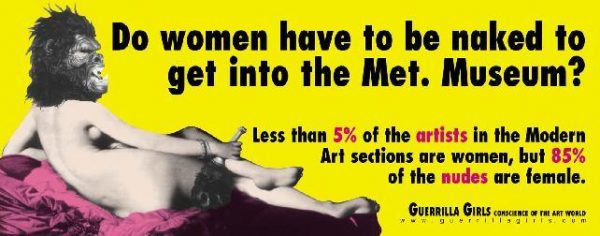Mariah Carey was my first love. She was 30, I was 10, but we seemed to share in the struggle to come to terms with the zeitgeist. We were introduced in 2001 through a cover of Phil Collins’s ‘Against All Odds’, which appeared as a duet with the Irish boyband Westlife. After the third verse Mariah takes off in an unchecked howl. ‘Wait for it,’ I’d say, playing the song over and over again in the car to my dad, ‘here it comes, now she’s killing it,’ as if talking about a guitar riff on a Doors’ track. I had come into consciousness under the bombardment of Aqua, Spice Girls, Britney and Christina Aguilera, and didn’t know that it was Mariah to whom the last decade belonged. In that first year of the new millennium, ‘the best selling female artist of all time’ seemed to me a niche discovery, rescued from oblivion.
Part of the reason for this was that the pop game had changed. The new rules privileged youth, styling and story above all else. Voice was something almost tacky – in Aguilera’s case, for instance – and technique entirely foreign. What sold records was Britney being a virgin, and J-Lo being from the block. Pop stars were manufactured in two moulds: those audiences want to fuck, and those audiences want to be. At 14, when pressured to name a woman I desired, I shrugged and suggested sheepishly: Mariah? Needless to say, I didn’t want to fuck her. I don’t know that anyone did. Not because she hasn’t always been beautiful, but because she seemed lonely – without context, somehow. For the same reason I didn’t want to be her, not for all the pink penthouses in the world. I was desperate to be Britney, happy and horny and laughing like a toddler. What a blissful life that would have been. My attachment to Mariah was more like a sense of adjacency and of inching along in parallel weather; being really really good at pretending, while being always outside ourselves, and outside everything else, too.
In 2020, on the thirtieth anniversary of her eponymously titled 1990 debut album, Mariah Carey gifted her fans Rareties – a selection of previously unreleased tracks spanning the length of her career, including a live recording from the famous Tokyo Dome show in 1996 – and a surprisingly well-received memoir, The Meaning of Mariah Carey. By her own account, Mariah had a shit upbringing, but I guess we knew that. She grew up in an abusive household, and ‘got her big career break as the child bride of a man nearly twice her age, who happened to be the CEO of Sony, Tommy Mottola’, as Rob Sheffield put it for Rolling Stone. Mottola was the Charles to her Lady Di, her wedding dress similarly smothering, and their relationship, too. But while her personal life has always been there in the background, it was never a marketing tool.
Among the most emblematic of the early memories she shares in The Meaning of Mariah Carey is the first time she realised she could use her voice to step outside of personhood. Not yet ten years old, she is told by a friend that she sounds like an instrument – a whole suite of instruments; wondrous vessels, desired, revered and unmoored. While most singers perform their identity through their music and visuals, Mariah employs her medium to get away from it. Music is a triumph; a way to escape pain, rather than portray it. Her art sits in a lineage of mostly black women singing jazz, gospel and R&B, many of whom, like Whitney Houston, got knocked by a cocktail of divine gift, drugs and violence. Mariah being mixed race, and – depending on styling and light – white-passing, largely obscured the racial context of her work, and with it, perhaps, the nerve that would have rendered her slick escapism readable on different terms. This obfuscation was not only a PR-ploy to sell her to white people, but an effect of voice being the lodestar of her show to an extent that enabled her to be no one – by which I mean, no one you know. Thirty years after she set out, during a time in which the confessional mode is in the ascendency, and identity is both cause and commodity, Mariah’s example asks a question of how virtuosity-as-style impacts music, and art more generally, and what its relationship is to something like dignity, and even privacy. What happens if we skip Judith Butler’s -ivity, and revisit the ‘performance’ in a traditional sense, not just as a way of conjuring an identity but a way of protecting it, too?
Mariah’s is a type of artist subject that may well be about persona – the quintessential diva she learned to stage with almost farcical self-consciousness, on her cross trainer in stilettos, or in a bathtub full of milk – but not personhood. Rather than a testimony to Mariah’s emotions, or an appeal to ours, the heart-ached lyrics to ‘If It’s Over’ (1992), ‘Without You’ (1993), or ‘My All’ (1997) are dramatic because they must be in order to meet her voice. Her ballads are never actually sad. They are impressive, not expressive, and as a result there’s not much for us to identify with. Skill is a form of deflection; it’s the antithesis of authenticity, but not of the artificial, that close kin of artistry. It allows you to almost succeed at being something other than what you are (as impeccable as your voice, as light). The catch is that what is expressed is always that ‘almost’, never the ‘something’.
I think that’s why, for a long time, I stopped listening to Mariah’s music. I preferred acts that spoke to the meat of my emotions, not their outline in a constellation of stars. I’d say the same for paintings: better the rock ’n roll of a ricocheted brushstroke than dutiful verisimilitude. Mariah’s oeuvre evokes a similar non-emotion as going to the Alte Nationalgalerie in Berlin, home to the romantic painters of the nineteenth century. Endless gothic ruins by moonlight, trees so tall and so green they look like mountains – all depicted with breathtaking accuracy, a brainy kind of perfection. Me to my dad in the car: Wait for it, here it comes, another ridiculously extra sunset, another glass-shattering whistle note. Each picture outdoes the next in near-hysterical portrayals of something that resembles sentiment, but in the end is too out of touch with reality, lacking the gritty faultiness of life, to make one feel anything at all. But these paintings are about longing, too, attempts at escaping the real rather than representing it. In fact, for the romantics, as Paul de Man argued in 1984, nostalgia often swelled to an intensity that collapsed any distinction between the longed-for object and the image that rendered it – that is, between imagination and perception. In the early-nineteenth century, that object was typically nature, or some abstraction of it, like unity or disembodiment, hankering equally for belonging and leaving behind. In German, Sehnsucht – the romantic affect par excellence – names a kind of desire for longing itself, one that doesn’t need an address. It’s possible to contain the feeling within yourself, like restlessness, but more profoundly distressing. This is a concept I think Mariah the outsider, Mariah the ever-removed, would gladly pose as the interpreter of. ‘If It’s Over’, for instance, is not the plea to be released from pain that its lyrics suggest, but constitutes, in and of itself, the getaway car.
I listened to the CD of her 1992 MTV Unplugged performance so many times her interludes with the audience became part of the music, something to sing along to. Especially etched into my memory is the sound of her smile at the end of ‘If It’s Over’. Odd, considering the song’s woeful portrayal of a relationship quietly falling apart. ‘Won’t you talk to me? This is so out of hand / Something’s gone wrong with the life that we planned’, Mariah sings, and rolls the ‘wrong’ impressively before dropping to a mad low on ‘planned’. When she sings the title she flings ‘over’ at the crowd like a diamond necklace, and concludes ‘let me go’, stretching ‘go’ to such an impossible length that when she finally comes up for air, her voice cannot but break into glee – the Olympian’s relief at having once again maxed out human physiology. ‘Thank you!’, she says, beaming. Equally, ‘Without You’ is designed for letting it all go: drawing out the vowels on ‘can’t’ and ‘live’ as if howling at an endless freight train passing. When quiet resumes you might find that you can, in fact, live. Or that what reverberates through this song is not actual suicidal desperation, but the technical dexterity of humans that routinely allows us to escape our hurt and survive.
And then there are the remixes. ‘Whatcha gonna do when you get out of jail?’ Mariah asks Ol’ Dirty Bastard on the sublime ‘Fantasy’ remix of 1995. ‘I’m gon’ do a remix,’ the rapper replies. That simple. To remix is to shuffle reality to your liking. It’s catharsis, and also the very fantasy that the song is about. Mittelalterliche Stadt an einem Fluss (Medieval City on a River), a painting by Karl Friedrich Schinkel from 1815, shows a magnificent medieval cathedral. It could be Chartres but with the ornamental riches of Reims and the size of Cologne, but I’m just guessing. In the background a great city sits picturesquely on a river. Like the dreamt-up house of god, it’s the city as remix: Bamberg meets Prague meets Paris, every great steeple in Europe gathers in this mirage of a picture composed on the ruins of the Napoleonic wars and at the onset of the industrial revolution. Cue Mariah on Glitter’s cover of ‘Last Night a DJ Saved My Life’: ‘There’s not a problem that I can’t fix, ‘cus I can do it in the mix.’ To top it off, Schinkel framed the scene with a perfect rainbow. ‘And away goes trouble down the drain.’
After smashing it with ‘Fantasy’, other songs were re-recorded with a new chorus, or an extra verse, becoming something more and other than what they started out as. ‘I told you, if Jermaine {Dupri} likes it, then I like it’, Mariah giggles over the telephone at the beginning of the So So Def mix ‘My All/Stay Awhile’, which transforms the Spanish guitar ballad into R&B funk in an act of such effortless musical one-upmanship you can’t help smiling. Pure jouissance: pleasure beyond the pleasure principle; a joy motivated only by the possibility of exceeding its own boundaries. If, in the original version of ‘My All’ , the message of self-obliteration in the face of love was already second to Mariah’s vocal performance, in the So So Def mix, pain is but a charm on the singer’s bracelet. All references to reality have been mobilised in the service of the musical joyride – the lyrics truly bear no relation to their delivery nor their musical context. I run to the remixes now the way I used to bellow to the ballads because you can’t hit a moving target.
Mariah’s evasive relationship to indexicality is what made her a safe subject for my gender-inappropriate adoration. My first attempt at social assimilation through pop fandom had been Westlife. I thought that, since boys ought to play with other boys, they also ought to like music made by men. Naturally the blow-dried bangs and intensely devoted gazes of these baby-faced catholic lads failed to convince anyone of my being a ‘real boy’. Westlife was a base appeal to sex and emotions, and it worked. But just as cooking turns from reproductive labour to artistry when what is on the menu is cailles en sarcophage, so Mariah transcends social constructs by way of her virtuosity. To love Mariah is to love something greater than your own reflection in a set of lyrics, or the desire most of us felt for Britney’s midriff. True artistry has the ability to put the instant in relation to eternity. Or so I thought.
In Karen Blixen’s short story ‘Babette’s Feast’ from 1958, set in the context of the post-romantic pietistic revival in nineteenth-century Scandinavia, a French master chef becomes the kitchen maid of two protestant spinsters in a small town in Norway. She arrives out of nowhere one night, destitute, with a note that reads ‘Babette can cook’. So for fifteen years she’s tasked with making rye porridge and herrings, rather like asking Mariah to sing backup on ‘Oops… I did it again!’ (Shania Twain took that bullet), or, as she did in 2002, whisper the chorus to Busta Rhymes’ ‘I Know What You Want’. When, one day, Babette wins the lottery (in another of Blixen’s tales, humans turn into monkeys, so this is no great surprise) she asks her hosts if she may throw them a dinner party. Predictably, the pious ladies will not hear of it – Babette oughtn’t spend her money on them. But then the cook takes a step forward like a terrifying wave rising and makes clear that, no, this is not for them, nor anyone else but herself; ‘I am a great artist, Mesdames,’ she says, and it is terrible for an artist to perform below her ability; it is devastating for an artist to harvest applause for an inferior act. A drawn-out cry resounds from the artist to let her give the best that she can. So Babette orders a turtle to make soup, exotic fruits, and vintage wines for the Norwegian dinner guests, who eat one course after the next entirely without comment, but not without joy. In fact, with every bite of coffined quail in truffle sauce, warmth spreads like a tingle all the way to their fingertips as the most beautiful fragments of the past are awoken and reach into the present. See, this is the virtue of virtuosity: what it makes room for besides itself. For the duration of the dinner, Babette is in the kitchen, nowhere to be seen. Like Mariah, alone in the spotlight at the Tokyo Dome, a vision in her black leather jacket, yet invisible, as the jaws of 55,000 people drop. Who wants to fuck a great cook, when you can eat her dinner?
But there’s a twist to Blixen’s tale that marks the limit to art’s autonomy. A voice comes with lungs, a body, a life – it may distract us from the banality of carnal existence only for so long. Babette, it turns out, is a communist, and though she despised the aristocratic clientele of her famous restaurant, she was also convinced that only they were able to truly appreciate her artistry. Babette herself stood on the barricades in the Paris Commune of 1871, arms blackened up to her elbows in gunpowder. She saw the head of every last one of them roll. There is nothing for her to come back to. No one to cook for. Babette, the great artist, will indeed be serving porridge for the rest of her life.
In 2001, Mariah’s then ex-husband Tommy Mottola sampled Yellow Magic Orchestra’s ‘Firecracker’ on the J-Lo track ‘I’m Real’, knowing it had already been signed off to ‘Loverboy’, the lead single of Mariah’s immediately forthcoming album Glitter. Mariah had no choice but to prematurely remix. Shortly after, she came undone in a since-infamous episode of MTV’s Total Request Live. ‘You’re my therapy session’, she said to Carson Daly, the surprised and confused host, having burst onto the live show unannounced, pushing an ice cream truck. ‘Mariah Carey has lost her mind – I don’t know what’s going on here – I was going to commercial break’, says Carson, and Mariah takes off the t-shirt she’s wearing as a dress, and throws it at the audience. In ‘Babette’s Feast’, art is radically severed from society, but its freedom is one that doesn’t emancipate the artist so much as it leaves her lonely. In the corner of mainstream music that Mariah’s superhuman range plunged her into, voice was generally enough to sell records. Her talent allows her to escape identity, but it also isolates her from empathy. When, rather than perform brokenness as a beautiful emblem, Mariah expressed actual distress, how could it not fall on deaf ears?
Upon its release on September 11, Glitter tanked. That same month Britney wore a live white python at the VMAs, and the ‘90s were officially over. For Mariah, it was like someone was heckling Schinkel’s dream city, shouting from the sidelines it isn’t real. (J-Lo, as she in no uncertain terms proclaimed to the tune of Firecracker, was ‘real’). And just like that, it was as if that great vista had never existed – because it hadn’t – and all the artist could do was nod and say, sure, but I need my therapy, too, and it was nice to look at for a while, anyway, wasn’t it? And it was. But it’s also true that the most fantastical of the romantic period’s paintings were never the best ones. In fact, a much more delightful motif from the romantic’s roster is that of the artist in his studio with an open window behind him, pointing to the horizon that was never met, and baring the distance, which had been the subject all along. And there we have, if not the essence of romanticism, then at least the meta-text that gives it away. Mariah’s art, and Schinkel’s, is that of the getaway car – not the destination. If there’s delusion it’s on the part of the audience. Schinkel in Neapel (Schinkel in Naples), a painting by Franz Ludwig Catel from 1824, shows Schinkel seated with his papers and the Bay of Naples in view through the open door behind him. His eyes glimmer with the merest hint of melancholy: surrender to the very practical understanding that when one mirage crumbles it is the duty of the romantic to erect another, equally remote. If medieval’s out for the moment, why not try antiquity?
For the two decades that have past since the ‘Loverboy’ riff-theft, Mariah has consistently sworn she does not know who J-Lo is, an outlandish and fabulous claim she continues to maintain to this day. Mariah doesn’t let reality pin her down. Isn’t the whole point of being an artist that you get to mix and remix? ‘That album nearly killed me’, Mariah has since said of the time her disappearing act glitched. But what did she do? Fly to Capri and immediately record a new one. She sings it herself: ‘If it wasn’t for the music, I don’t know what I’d do.’ Today, the legacy of the romantic movement is not so evident in fine art, preoccupied as it is with subversion and criticality, nor in mainstream visual culture, where authenticity and testimony reign supreme. Rather, in one especially rarefied and highly-strung chapter of the pop music industry, Mariah continues to represent a faltering old guard, ever-fleeing on a flying rug of dexterity. From her, that promise I so clung to as a child resounds throughout the world in a drawn-out whistle note: away, away, away, away.




